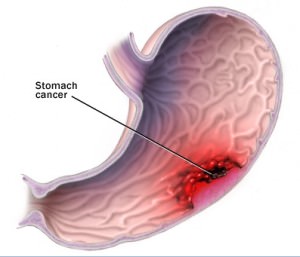 The stomach is a dynamic organ that lies in the upper abdomen. In fact, more than 50% of the stomach is behind the lower aspect of the ribs and sternum. The stomach is responsible for accommodating ingested food and breaking the food-stuffs into smaller particles for digestion and absorption as the particles pass through the small intestine.
The stomach is a dynamic organ that lies in the upper abdomen. In fact, more than 50% of the stomach is behind the lower aspect of the ribs and sternum. The stomach is responsible for accommodating ingested food and breaking the food-stuffs into smaller particles for digestion and absorption as the particles pass through the small intestine.
The stomach has the incredible ability to distend and accommodate large volumes of food through a process referred to as “receptive relaxation”. The fundus of the stomach can hold large quantities of food providing time for stomach acid to chemically break molecular bonds within the food particles. In addition, a coordinated set of stomach contractions provides a mechanical force that ensures mixing of food with stomach acid as well as the physically breaking down foodstuffs.
The stomach produces HCL (hydrochloric acid), an extremely potent acid. The pH level of the stomach can reach 1 (extremely acidic environment). The lining of the stomach is covered with a protective mucous that has a basic pH (high pH) that neutralizes the caustic effects of the acid on the inner surface of the stomach.
In addition, the stomach produces a number of chemicals that contribute to sense of hunger (Ghrelin), increase acid production (Gastrin) and facilitate absorption of vitamins (Intrinsic factor).
Stomach cancer
 Although relatively rare in the United States gastric cancer is diagnosed approximately 21,000 times/year and associated with more than 10,000 annual deaths. The prevalence is somewhat higher in men than women. The disease tends to occur in the seventh decade although many cases have been documented at earlier ages. There is also appears to be a higher prevalence in African Americans, Asian Americans and Hispanic in comparison to Caucasians. Japan and Korea have had the highest incidence of gastric cancer. Worldwide, gastric cancer is the second leading cause of cancer related deaths.
Although relatively rare in the United States gastric cancer is diagnosed approximately 21,000 times/year and associated with more than 10,000 annual deaths. The prevalence is somewhat higher in men than women. The disease tends to occur in the seventh decade although many cases have been documented at earlier ages. There is also appears to be a higher prevalence in African Americans, Asian Americans and Hispanic in comparison to Caucasians. Japan and Korea have had the highest incidence of gastric cancer. Worldwide, gastric cancer is the second leading cause of cancer related deaths.
Although the exact cause or mechanism that leads to gastric cancer is not totally understood there are several identified risk factors:
- Medical: hereditary risk factors, adenomatous polyps, H. pylori infection
- Dietary: salted meats/fish, smoked meats, foods containing high nitrates
- Environmental: Smoking, high alcohol consumption
There are several distinct varieties of gastric tumors. Some tumors require resection of the stomach while a more tailored approach may be advisable for other tumor types. The most common stomach tumors that require surgical management are:
- Adenocarcinoma
- GIST (gastrointestinal stromal tumor)
- Carcinoid
Laparoscopic Surgery for Gastric Cancer
Once entirely performed in an open fashion stomach surgery can now safely and routinely be performed using minimally invasive techniques. The ability to obtain negative margins and harvest lymph nodes has been demonstrated to be equivalent compared to the open approach. The laparoscopic approach has also been demonstrated to reduce post-operative pain, decrease wound infections as well as expedite recovery and return to activity.
Laparoscopy has also led to alternative approaches to certain tumors that are adjacent to the gastroesophageal junction (the area where the esophagus connects to the stomach) and pylorous (the portion of the stomach that joins the small intestine). Some tumors can be removed using a trans-gastric approach. This refers to removing the tumor by making small openings in the stomach and literally operating inside the stomach itself. Once the tumor is successfully removed the small stomach openings are sutured closed. This technique is limited to certain types of tumors but allows preservation of normal anatomy and function.
